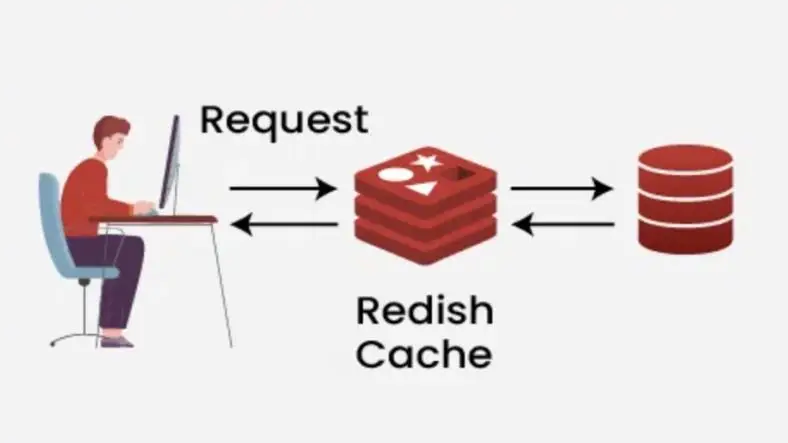Caching is a vital technique for improving application performance, especially in e-commerce platforms where product catalog data is frequently accessed. By using Redis as a caching layer, you can significantly reduce database load and improve response times for users.
In this article, we’ll walk through the steps to implement a Redis cache for product catalog data in a PHP 8 application.
What is Redis?
Redis is an open-source, in-memory data structure store known for its speed and flexibility. It can be used as a database, cache, and message broker, making it an excellent choice for applications that require fast access to data.
Why Use Redis for Caching?
Redis is an in-memory data structure store known for its speed and efficiency. Its ability to handle various data types makes it an ideal choice for caching scenarios. Here are some key benefits:
- Fast Access: Retrieving data from Redis is significantly faster than querying a traditional database.
- Reduced Database Load: By serving cached data, you minimize the number of read operations on your database.
- Scalability: Redis can easily scale to handle increased load as your application grows.
Setting Up Your Environment
Step 1: Create a New DDEV Project
If you don’t have an existing DDEV project, you can create a new one. Open your terminal, navigate to your desired directory, and run:
mkdir my-product-catalog
cd my-product-catalog
ddev config
Follow the prompts to set up your project, ensuring that you specify PHP 8 as your environment. After configuration, start your DDEV environment:
ddev start
Step 2: Add Redis to Your DDEV Project
DDEV makes it easy to add services like Redis. To enable Redis, run:
ddev add-service redis
This command sets up Redis for your DDEV environment, making it accessible to your PHP application. If not added, alternatively you can setup using below steps
- Under the
.ddevfolder, create a file with the namedocker-compose.override.yml. - Add the below code into the file
docker-compose.override.ymland then runddev restart
version: '3.6'
services:
redis:
image: redis:latest
container_name: day15-ddev-php-redis
ports:
- "6379:6379"
networks:
- ddev_default
volumes:
- redis_data:/data
volumes:
redis_data:
driver: local
Step 3: Access Redis
Once Redis is added, you can connect to it using the hostname redis. You can also use the Redis CLI to verify that it’s running:
ddev ssh
redis-cli ping
You should receive a response of PONG.
Step 4: Install a Redis Client for PHP
To interact with Redis in your PHP application, we will use the predis/predis library. Install it using Composer within your DDEV environment:
ddev composer require predis/predis
Implementing the Redis Cache for Product Catalog Data
Step 1: Connecting to Redis
Create a new PHP file (e.g., cache.php) in your project’s web directory. In this file, establish a connection to Redis and implement basic caching functionality:
require 'vendor/autoload.php';
use Predis\Client;
class RedisCache {
private Client $client;
public function __construct() {
$this→client = new Client(['host' => 'redis', 'port' => 6379]);
}
public function set($key, $value, $expiration = 3600) {
Google Ad 1
$this→client→set($key, $value);
$this→client→expire($key, $expiration);
}
public function get($key) {
return $this→client→get($key);
}
}
Step 2: Simulating Product Catalog Data Retrieval
Next, let’s simulate a function that retrieves product catalog data. In a real application, this would typically involve querying your database. For this example, we’ll return a hardcoded array:
function fetchProductCatalog() {
// Simulate database call
return [
['id' => 1, 'name' => 'Product A', 'price' => 100],
['id' => 2, 'name' => 'Product B', 'price' => 200],
['id' => 3, 'name' => 'Product C', 'price' => 300],
];
}
Step 3: Implementing Caching Logic
Now, let’s implement the caching logic for the product catalog data. We’ll first check if the data is available in the cache before querying the simulated database.
function getProductCatalog(RedisCache $cache) {
$cacheKey = 'product_catalog';
// Try to get data from cache
$data = $cache→get($cacheKey);
if ($data) {
echo "Cache hit! Retrieving product catalog from cache.\n";
return json_decode($data, true); // Convert back to an array
}
// If not in cache, fetch from the "database"
echo "Cache miss! Fetching product catalog from the database.\n";
$data = fetchProductCatalog();
// Store in cache
$cache→set($cacheKey, json_encode($data)); // Cache as JSON string
return $data;
}
// Usage example
$cache = new RedisCache();
$productCatalog = getProductCatalog($cache);
print_r($productCatalog);
Step 4: Running Your Application
To run your PHP script, access it through your web browser at http://ddev.site/cache.php, or execute it from the command line within the DDEV environment:
ddev exec php cache.php
The first call to getProductCatalog($cache) will fetch the product catalog from the simulated database, while subsequent calls will retrieve the data from the Redis cache.
Conclusion
Implementing a Redis cache for product catalog data in a PHP 8 application using DDEV is a straightforward process that can significantly enhance your application's performance. By caching frequently accessed data, you reduce database load, improve response times, and provide a better user experience.
Using DDEV simplifies the development environment setup, allowing you to focus on building efficient applications. As you continue to develop your e-commerce platform, consider leveraging Redis for additional caching and data management tasks to further optimize your application.
Thanks for reading the article, for more Science and Technology related articles read and subscribe to peoples blog articles.















